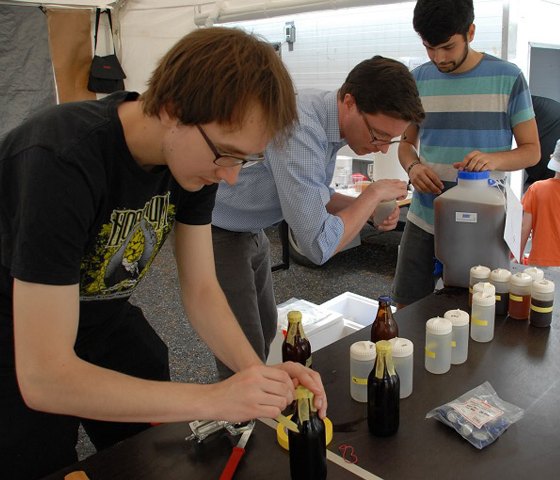By Joshua Rapp Learn
Lagers aren’t the most popular brews among craft beer enthusiasts, and sometimes for good reason. Many of us spent our college years shot-gunning pale big-brand lagers because there was no reason to sip the stuff in appreciation — the warmer the swill got, the worse it often tasted.
But researchers have been tinkering with yeast strains in an effort to create quicker-brewing lagers that offer the same kinds of flavor profiles as the ales we’ve come to love in the years spent paying back all that wasted student loan money.
“It might sound strange to create lager yeast to produce lots of flavors when lager yeasts in general aren’t known for their flavor profile,” said Kristoffer Krogerus, a graduate student and biotechnology researcher at VTT Technical Research Centre of Finland. “But we can also ferment faster and with higher alcohol.”
Krogerus, the lead author of the recent study published in the Journal of Industrial Microbiology and Biotechnology, said that the typical lager yeast, Saccharomyces pastorianus, is actually a hybrid of two parent yeast strains: the common ale yeast, S. cerevisiae, and S. eubayanus.
Researchers knew there were two strains present in the lager yeast as recently as the 1980s. But it wasn’t until 2011 when the latter strain was discovered in the wild in Argentina, though the origins of S. eubayanus may trace back to the old world. This new parent strain is hardy under cold temperatures but it’s not as efficient at fermenting wort and making beer. S. cerevisiae, on the other hand, is adapted to digest the sugars found in wort but doesn’t work so well in cold temperatures. When the two strains are joined, the resulting hybrid brings in the best of both worlds.
“The hybrid takes beneficial properties from both,” Krogerus said.
But there are many different kinds of ale yeast, and Krogerus and other researchers in the lab wanted to know if they could bring in the flavors present in something like hefeweizen yeast into a lager by creating new hybrids with the cold-loving S. eubayanus strain.
They brewed and bottled a lager with the catchy name 758-3 A62×C902 H1 with a flavor profile more like Belgian ales. Krogerus said it had fruity elements, with banana, apple and aniseed flavors — “Not what you would expect from a lager.”
They didn’t compare these hybrids directly to commercially used lager yeast in terms of efficiency and brewing speed. But the hybrid strains outperformed their parent strains, doing better in both colder and warmer fermentation, or from temperatures of 50 to 68 degrees. The hybrids also improved the production of ethanol — which could mean higher-alcohol lagers in the future — and settled better after fermentation than their genetic ancestors.
He said that in theory, you could hybridize many different beer yeast strains, though successful mixes would depend very much on their genetic background. “A lion and a tiger can make a liger, but it’s not always possible between species.”
These hybrids could result in more all-in-one strains that could be equally efficient in bottom-fermenting lagers as in top-fermenting ales.
Some commercial brewers have shown interest in the team’s research, though Krogerus said he can’t comment on this directly. But this could mean we will have commercial beer with more interesting flavors than the run-of-the-mill adjunct lager.
“The performance will be improved and hopefully there will be beers with more flavor profiles available,” Krogerus said.
These new hybrids might be a way to bring around those friends or significant others that aren’t partial to beer. Or better yet — you can sip to your satisfaction without requesting a beer bong next time someone picks up a six pack for the game.



